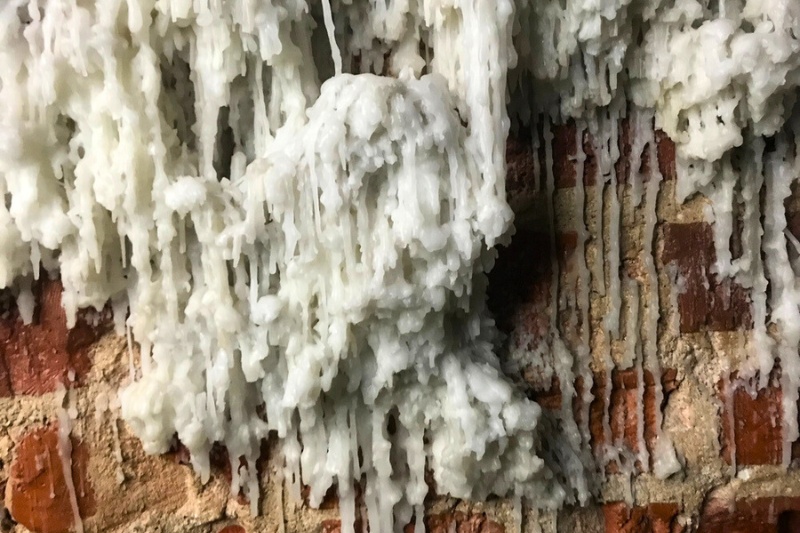Getting wax on your walls may not be an everyday thing. But if a candle sputters or your kid decides to get artistic, cleaning it off is a must.
Provided you work quickly but with care, you should be able to remove wax from a wall without it leaving a mark.
So, let’s find out how to do that. In this article, we’ll cover how to get wax off a wall.
How Does Wax Interact with Wall Surfaces?

Wax is mostly fat-based and, as you probably know, is fairly soft at room temperature.
When cleaning it up, the biggest concern is that it’ll leave a grease mark. This is most common on chalk-based matte paints or wallpaper.
Generally, though, it should be possible to clean wax off any surface without too much risk.
You’ll want to be most careful with wallpaper, as removing the wax could strip colour out of the paper or rip it off the wall entirely.
On painted walls, provided the paint is properly cured and you have no concerns about the surface underneath (drywall, plaster, etc.), you can be a bit more forceful with your cleaning methods if needed.
How to Get Wax Off a Wall
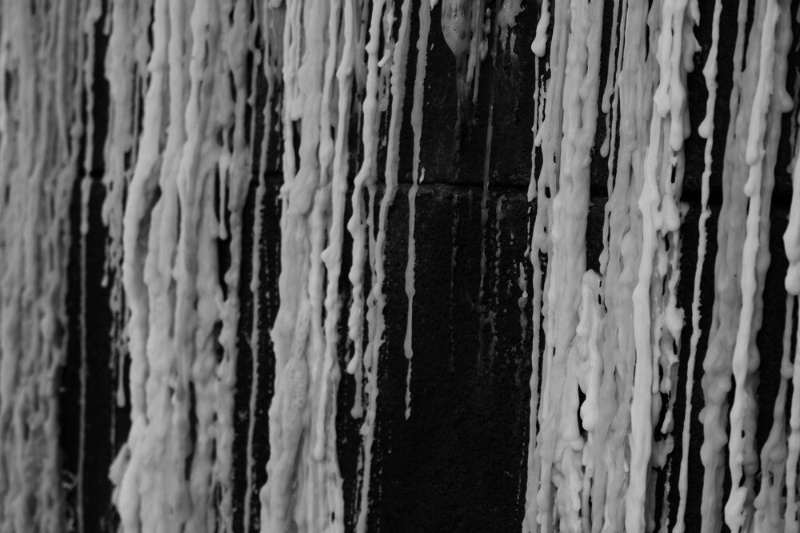
In no particular order, here are some suggestions for how to get wax off a wall.
It should be fairly clear which are the least invasive methods, so always try these first if you’re dealing with wallpaper or another delicate surface.
1. Wipe it up while fresh
If possible, clean up the wax while it’s still liquid. This’ll be the easiest way to avoid any marks on your walls.
Simply dab it with a bit of kitchen paper to remove it. You should find this is the best option for candle splatter, but it obviously won’t work on crayons.
2. Scrape the wax off
For wooden walls or harder surfaces that are painted, scraping the wax off will be easiest.
You’ll want to ensure the wax is properly hard before scraping. To do so, put some ice cubes in a sandwich bag and hold it against the wax for up to a minute.
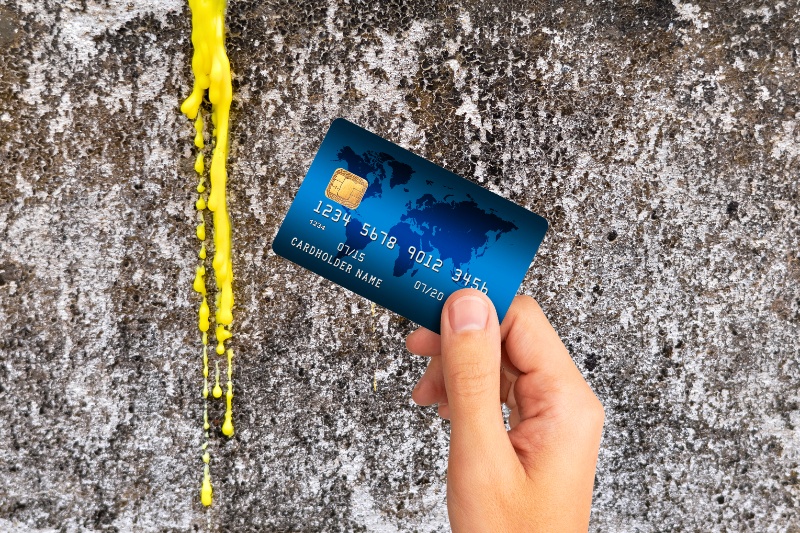
Then, scrape the wax off using a thin piece of plastic, such as a credit card.
You’ll need to be careful that you get the angle right. Use a 45-degree angle or lower so you’re not gouging the surface.
Instead, you want to be scraping against it. In theory, this should help get wax off most hardy surfaces.
3. Heat the wax
Alternatively, you can try heating up the wax so you can wipe it away. This method works on porous and non-porous surfaces, but be careful on wallpaper.
Heating the wax on wallpaper risks it soaking further into the paper, which could leave behind grease marks.
For this method, grab your iron and set it to the lowest heat. Hold 3-4 paper towels over the wax and press the iron onto it.
Check the wax every 10-15 seconds until it’s softened and absorbed into the paper towel.
On painted walls, you can soften the wax with a hairdryer and scrape it using the card method above.
There’s less risk of the wax soaking into the wall, but just make sure you don’t smear the soft wax everywhere.
4. Wash it with vinegar
Once you’ve removed as much as possible, it’s worth trying to wash the area. Avoid going straight in with washing, as you don’t want to soften and smear the wax. As with any other stain or mark, you’ll want to remove as much as possible first.
To wash the area, mix one part hot water with three parts white vinegar. The water should be as hot as you can stand (bearing in mind you’ll be putting your hand in it). Wet a cloth using the mixture and wring it out.
Start at the top of the wax-marked area and wipe in downwards motions, applying only a bit of pressure.
Rinse the cloth thoroughly after a few wipes and aim to use a new area of the cloth every time you do so. This should reduce the risk of wiping wax back onto the wall.
If necessary, dry the area with a fresh cloth after you’ve finished wiping it down. This method isn’t suitable for wallpaper, but is fine for painted walls and treated wood surfaces.
5. Use a wax remover
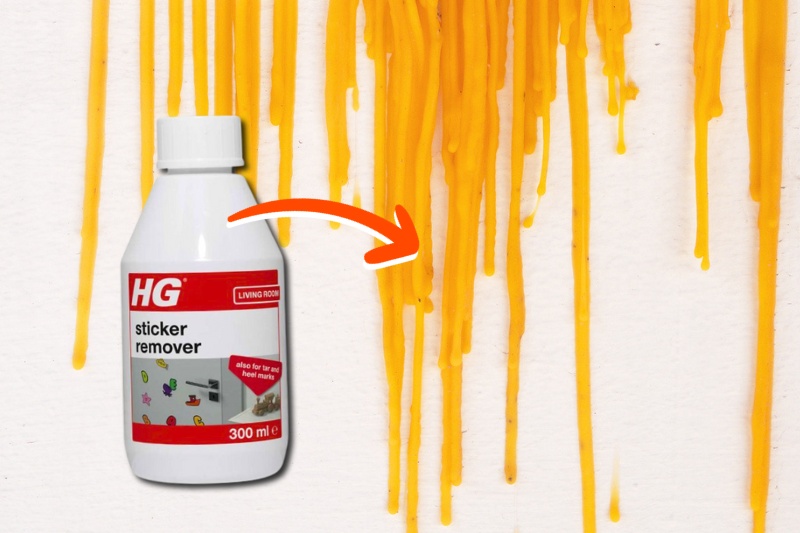
Wax removal products aren’t super common, mainly because you can use heat or cold to get it off. However, if you need something heavy duty, a sticker remover product should work.
Something like HG Sticker Remover is designed for oil and grease, too, meaning it should help with wax. Remember, wax is primarily fat-based, so this is the sort of product you want to use.
The benefit of using a product like this is that it should prevent grease stains from forming. However, check that your chosen product can be used on the material you’re cleaning.
Similarly, you’ll want to perform a patch test somewhere hidden. The biggest risk with this kind of product is that it’ll mark paint, but it’s best to find this out before you wipe it everywhere!
How Do You Get Wax Off a Wall Without Messing Up the Paint?
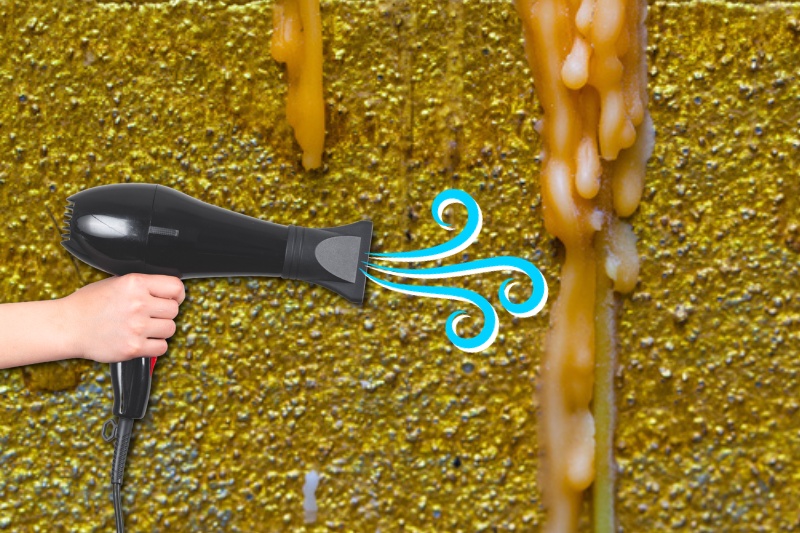
The best way to get wax off a wall without messing up the paint is to use heat.
On a wall painted with matte paint, use a hairdryer set to a medium heat. Hold it about 10 cm away from the wall, pointing at the wax.
As it softens, it’ll return to its liquid state. From there, you can soak it up with a paper towel or peel it off before it becomes too runny.
Final Thoughts
Dealing with wax on walls isn’t too difficult. It can pretty much always be removed with either heat or cold and a bit of elbow grease. However, the biggest risk is leaving behind marks on the surface, so just be careful and use the method most suitable for your wall finish.

Jacob is a writer based in Wales, where he lives with his partner and two dogs. All his work is fuelled by extensive research and buckets of coffee.
